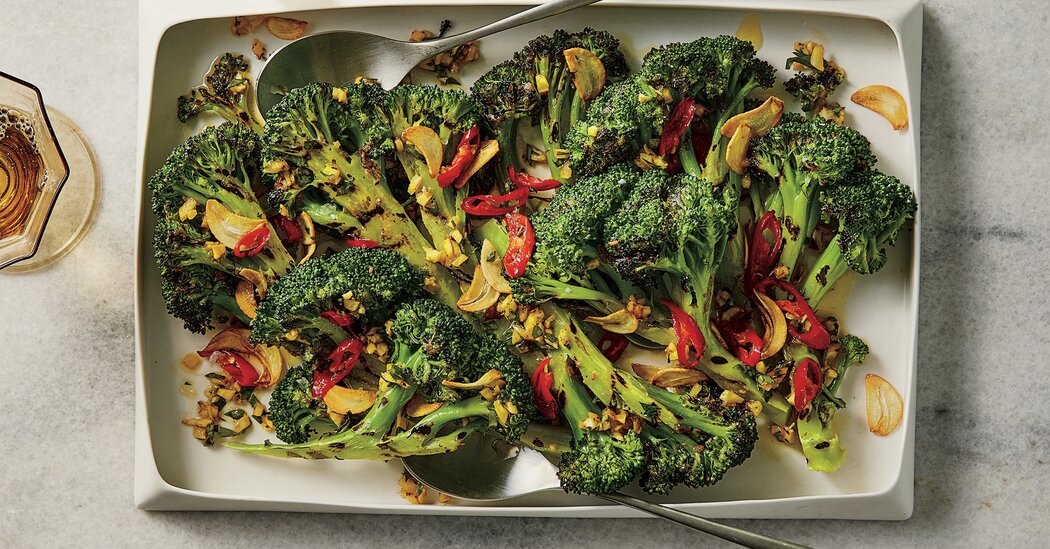
Until recently, I haven’t really had an insight into this question, but listening to Christopher Kimball speak with J. Kenji López-Alt on his ‘‘Milk Street Radio’’ podcast about another popular broccoli classic, beef and broccoli, served in many Chinese restaurants in America, I realized something new.
López-Alt pointed out that in that particular dish, the point isn’t the beefy flavor, as you might expect — the beef is often washed in order to tenderize it and so loses much of its punch — but more the balance of meat and vegetables. I would take this further and say that the pre-eminence of the broccoli is actually what this dish is all about. If strong beefiness dominated, the broccoli would lose its, well, broccoliness. To keep its integrity, broccoli really needs to stay firm and not be overshadowed by anything too rich.
This is why, I now understand, my past attempts to cook broccoli long and slow — trying to recreate a cauliflower-cheese with a green shade, or a vegetable gratin for spring — have always ended up as fiascos. Broccoli, unlike its brassica cousins cauliflower, cabbage or turnips, loses everything and gains nothing when it is cooked down to fork-submission. The freshness, the color, the perkiness of its flesh are all gone, and all that’s left is a drab, slightly bitter pulp.
My friend and business partner, Sami Tamimi, who brought this dish to us, having previously cooked it in a restaurant in Tel Aviv, learned the hard way about some other undesirable effects time has on broccoli. Tossing it with lemon slices, which was part of our original recipe, although making it taste sharper and look prettier, causes the florets to lose all their color and go gray as soon as the dish is placed on display. To prevent this, we removed the lemon and instead gave some slices on the side to be added just before serving, which is what I would recommend doing with the lemon sauce here as well.
The way the broccoli is cooked — quickly blanched (to get heat through to its core), cooled, dried, tossed in olive oil and seasoning and then put on a hot chargrill pan to get its neat stripes — does a couple of useful things.


